School readiness-
make your own stories
Many children visit their school before their first day.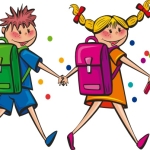
It’s an ideal opportunity to take photographs or make drawings for a book, (or “social story”) that can be shared until your child starts school.
Children who help make the story have ownership,putting in whatever is most important to them.
Social stories can be:
- Small photo books
- Powerpoint stories
- Printed from a template
- Cards with pictures laid out to make a story
- Laminated A4 sheets with pictures of the day to put in sequence
- An A4 booklet
- A wall story
- A big book
- Calendar with pictures to talk about
- Pictures with voice over on your phone or computer
- A video with your child talking about school or walking around school
- Oral storytelling, – talk about your own experiences as a child starting school
- Letters and pictures between children at school and the early education centre made into a book talking about school to read.
What children want to know.
Research has shown that children,parents and educators can value different things when they think about starting school, and what children need to be “ready.”
Often children want to know the “rules” and “places.”
For example:”What are the rules when you are playing in the playground?”
In Bob Perry and Sue Dockett’s paper “Voices of children in starting school’” pages 16 -17 noted a powerful social story example.
…“In the other preschool, children asked for information about the following questions:
- Where are the rooms, toilets, canteen, office and teachers’ staff room;
- Where are the children allowed to play and not allowed to play?
- Where do they sit to each lunch and where are the water bubblers?
- What do they need to bring in their bags?
- What food and drink are they allowed to bring to school?
- Who will their teacher be and which children will be in their class?
- Where will their Mum or Dad drop them off and pick them up?
In response, children in the current Kindergarten class prepared a short story with illustrations about when they started school. These books, called “Stories from Big School” were taken to the Preschools early in Term 4, prior to the commencement of the transition program…”
This paper has a number of different collaborative strategies schools and prior to school services used to strengthen transition to school provision.
Voices of children in starting school (for Wollongong Transition to School) This AJEC link leads to a free publication with this paper.
Powerpoint stories- make your own book,use on phone and tablets.
An Australian transition to school website ( ECIA, Government funded) has a wide range of resources.Although these are geared for families with additional needs, they are excellent resources for all families.
A downloadable powerpoint can be printed out as a book about “My New School.” Individual photos can be added to the text.
Go to the link on the left hand side “Activities to help prepare your child for school.”
Download the My New School story template (halfway down the page in the text)
It can be:
- Used on a smartphone or tablet.(The website advises “Click on the links to visit the App Store or Google Play to download free story and visual support applications for your smart phone or tablet such as “Flipagram™” or “Smilebox™”.)
- Printed as a booklet
Booklets that can also be used as cards ,wall stories, and laminated sheets.
Kids Matter has 3 different activity booklets that can be printed out.
- A picture book about me. Children can add their drawings about their home, family, friends and favourite things. The last page is the child going to school.(PDF)
- I am going to school next year . Pictures can be inserted to tell their new teacher and friends about themselves. (Docx document)
- I am starting school. This book focuses on the new school environment.After an orientation visit, photos can be inserted of the playground, classroom, lunch area , teacher and going home at the end of the day.
If an Educator or parent downloads the book before a school visit, they can take appropriate photos and then add them in for the child to read at home or in their early education centre.(PDF)
https://www.kidsmatter.edu.au/early-childhood/resources/starting-school
These books can be found under the heading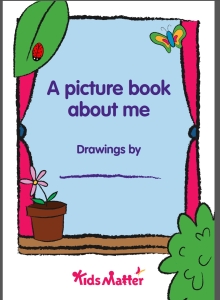
“Communication tools and activity books”,
then choosing the “activity books” link.
Free countdown to school calendar
Resourcing parents have a free July- June PDF / editable publisher calendar. The calendar has reminders and tips .
Examples from August are:” Ask your child questions about the story. “Who did you like best in the story?” “What did you like about them?” “What do you think might happen next?”
The second half has tips for ensuring a happy start to school.
Aboriginal storytelling kit
SNAICC (Secretariat of National Aboriginal and Islander Child Care) has developed an innovative and user friendly kit for children to self publish their own stories- ideal for stories about getting ready for or starting school.
The Aboriginal Children’s Self Publishing Workshop Kit can be used for any group of children that have a story to tell. Children make their stories and then use technology available to them – such as photocopiers, computers, scanners etc to print the stories for themselves and others.
It’s one of the best early literacy resources we have found, and available from SNAICC.
The kit contains:
- A user friendly, step by step, manual
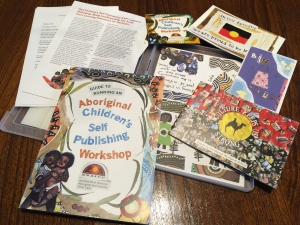
- DVD
- hard copy examples of stories
- information on strong linkages with the early learning framework.
WePublish App
Kids’Own Publishing has developed an App where children can write and illustrate their own 8 page book, from an app downloaded to an iPad .The illustrations look like collages and are bright and colourful.
The book can then be exported and printed.
This could be used for individual, or small or large groups of children very effectively.For Centres with a variety of family languages it’s an ideal way to develop bilingual books . Families can help with translation.
For an example: look at the “Wiggly Worms” book developed by Banjora Childrens’ Centre.
Guidelines to make a Social Story.
The Queensland Government has a transition to school page with an explanation of how to make a social story.
The story based intervention link brings up a PDF clearly explaining how to construct an effective and useful social story.
A social story template in word is included,that allows room for personal photos or drawings and information.
Each social story page is quite busy, but the photo/drawing space is adequate.
Although geared to families with an autistic or additional needs child, the resources are useful and appropriate for all families.
Westmead Hospital has a downloadable PDF “What is a social story”.
More parent information on starting school.
“This downloadable “I spy a picture book!” booklet is packed full of useful ideas that you can use at home every day. It contains fun, simple activities to help your child develop speaking, listening, reading and writing skills ready for school”
- A Special Place by NSW Department of Education and Communities
Families can print out a book about starting school in NSW.Routines, people at school, activities and friends are explained.
- Zero to three has an informative infographic about school readiness.( It may take a couple of seconds to come up)
- Trevor Cairney is Master, CEO of New College and Adjunct Professor of Education, University of NSW who writes a blog “Literacy, Families and Learning” for families, educators and educators.
http://trevorcairney.blogspot.co.nz/2014/10/how-do-i-know-if-my-preschool-child-is.html
http://trevorcairney.blogspot.com.au/2015/01/starting-school-is-there-perfect-age.html
Booklist
For a comprehensive booklist of stories download to share about starting school read our previous post.The list can be downloaded from the bottom of the post Australian Stories About Starting Big School.

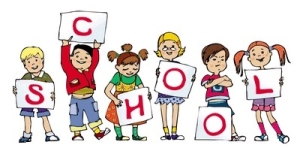
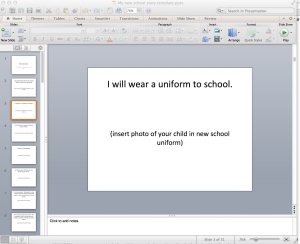
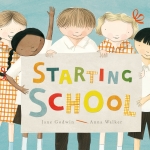
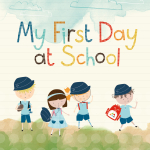
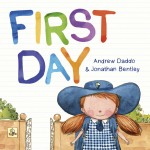
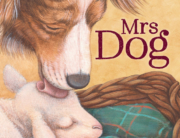
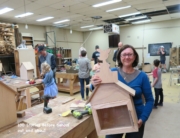
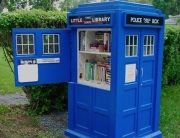
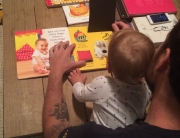
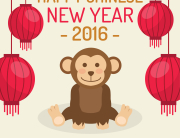
Leave A Comment